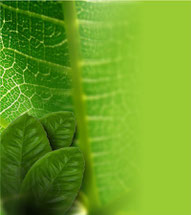
Topic III: Macromorphological characteristics of vegetative organs
Root
What is the root?
The root is the organ of higher plants, usually underground, that plays several roles including absorb and conduct water and dissolved minerals, accumulate nutrients and anchor the plant to the ground.
Root and stems differ in structure, by the way in which they shape and the lack of appendages, such as buds and leaves.
Types of roots
The root can be:
Primary: It forms from the first germinating, known by radicle.
Secondary: ramifications subsequent to the primary
Taproot: This type of root is the largest of the group and the more deeply penetrating.
Adventitious: they sprout directly from the stem very stem near to the base.
Aereal: they sprout directly from the stem in highest parts.
Parts of the root:
The root consists of three types of tissue:
Epidermis, or surface layer;
Fundamental or cortex tissue, and
Stele or vascular cylinder, located in the center of the root.
The roots tend to grow down, unless the water abound more in the soil surface.

 Pharmacognosy´s topics - Medicinal plants
Pharmacognosy´s topics - Medicinal plants


Write a comment
Amy@essentialoilspower (Saturday, 05 December 2015 15:06)
I wanted to thank you for this great read!! I definitely enjoying every little bit of it I have you bookmarked to check out new stuff you post.